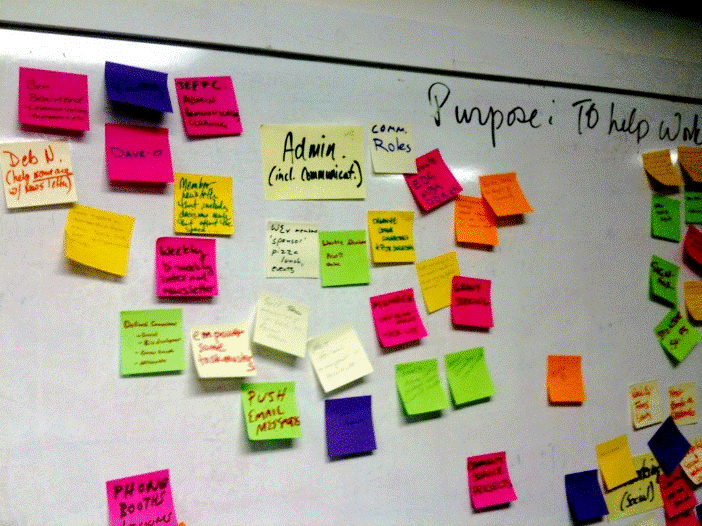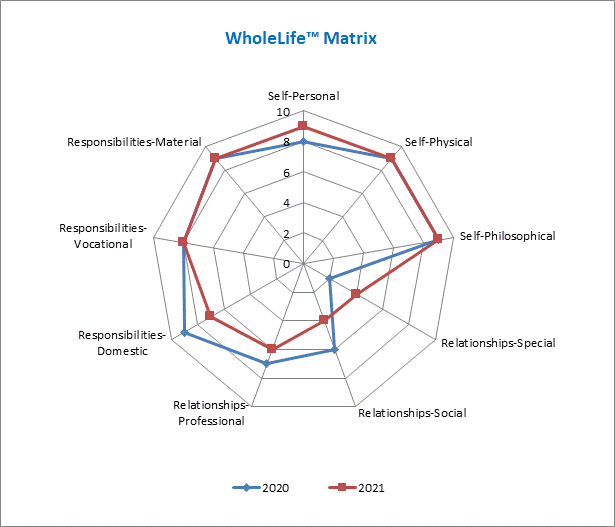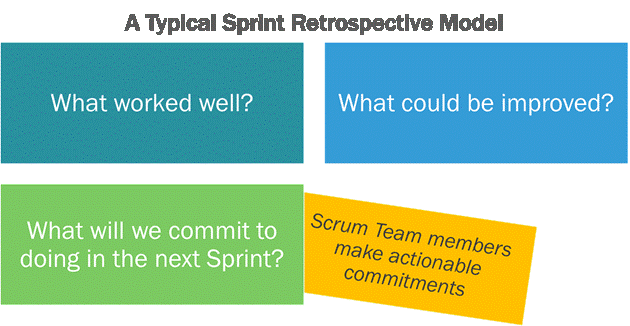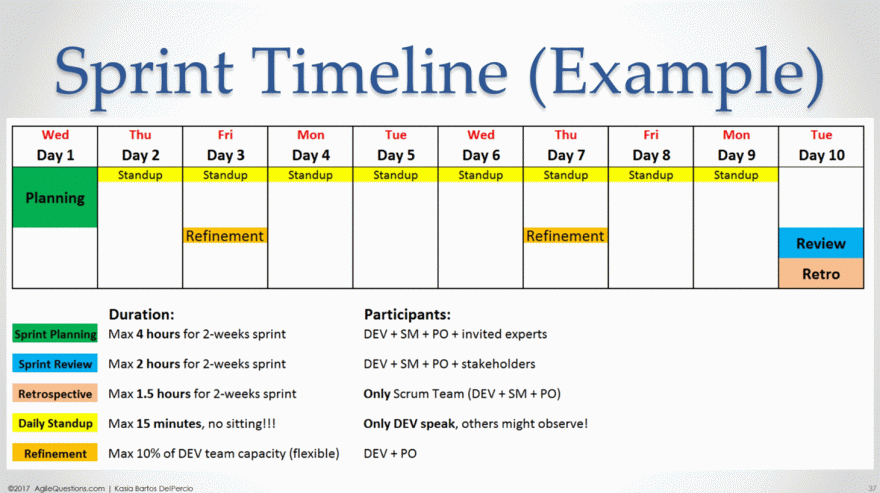|
|
|
Getting Shit Done
‒ By Michael D Cheatham
Some of what I implemented and that is helping increase my productivity are things I already knew about, but I have updated the old with some new techniques that have made all the difference.
Currently, I am trying to transition from a corporate job to running my own business as a Transition Coach, which means that I still have a full plate of corporate tasks to get done as well as a whole host of business startup responsibilities. In this article, I am going to talk about Getting Shit Done using the example of my efforts to create my own business As I am working toward starting my own business, as I said, I still have all of my corporate work to do, I still have a podcast to put out each week, I have household chores and I have my desire to help the Black community advance and reach more of its potential. So, in this article, I am, going to ask and hopefully answer the question: how do I get all the shit I need to do, done?
I wasn’t as productive as I wanted to be, so I started to investigating ways to get more done without going crazy. Some of what I implemented and that is helping increase my productivity are things I already knew about, but I have updated the old with some new techniques that have made all the difference.
To start with, there is a process that I followed for years and had good results, but I had let fall away, called Getting Things Done, by David Allen. I am going to review GTD and let you know what works and what doesn’t (from my perspective) and augment GTD with new processes that I feel have accelerated my ability to get shit done.
GTD is a 5-step process for getting organized and completing tasks, created by David Allen. Here are the 5 steps:

- CAPTURE - Collect what has your attention’ Write, record, or gather any and everything that has your attention into a collection tool.
- CLARIFY - Process what it means Is it actionable? If so, decide the next action and project (if more than one action is required). If not, decide if it is trash, reference, or something to put on hold.
- ORGANIZE - Put it where it belongs. Park reminders of your categorized content in appropriate places.
- REFLECT - Review frequently. Update and review all pertinent system contents to regain control and focus.
- ENGAGE - Simply do. Use your trusted system to make action decisions with confidence and clarity.
Now, this seems simple and many people, when the see the steps think that it is too simple a process to make a significant difference, and the
y would be both right and wrong. In my experience with using this system, I have found that there are a number of things implied with each step, that are not stated and so the process is not as simple as at seems at first blush. Let me go through each step and provide you with my experience in actually using it.
Capture – The advice from GTD is to capture “everything” that has your attention or really that could have your attention. In the book, Mr. Allen talks about reviewing mail, to/do list, emails, calendars, etc. My experience is that sometimes, the things you want to get done are not yet represented in any existing material form, sometimes it is just a thought, and it is difficult to bring all those thoughts to the surface during a single session. To help with the Capture step, I recommend that you list all the tasks, goals, and actions for each of the following:
- First, review the roles you play in life, for me this would be Family member, Consulting Executive, Entrepreneur, Podcaster, Friend, etc. List all of the goals, uncompleted tasks and actions that you want to complete for each role you play. Also, priorities and rate each role so you know what role you want to concentrate on.
- Next review segments of your life, you can use the Wheel of life for this, which is a way to sub-divide your entire life, not by roles but by areas. As, I think a systems approach is the best way to look at this, I recommend using life systems as a way to subdivide your life, one classification that I have found useful is Ralph Brandt’s Total Success program, he divides life by the following categories:
|
Life System
|
Sub-System
|
Description
|
|
Self
|
Personal
|
Mental and emotional growth
|
|
Physical
|
Health and Appearance
|
|
Spiritual (Philosophical
|
Values and Belief
|
|
Relationships
|
Special
|
Family and Loved Ones, Significant Other
|
|
Social
|
Friends and acquaintances
|
|
Professional
|
Vocation and career relationships
|
|
Responsibilities
|
Domestic
|
Related to home & private life
|
|
Vocational
|
Related to vocation and career
|
|
Financial
|
Related to money and resources
|
Table 1 - Life Systems
Here is the model in a wheel of life, in a format I call a WholeLife Matrix:

Figure 1 - WholeLife Matrix (Wheel of Life)
The idea for describing the areas of life as “systems” came from the book “The Habit-Forming Guide to Becoming a Systems Thinker and one of the recommendations is to review each “system” and think about how they interrelate. They list five systems, but I have updated that to nine, based on Ralph Brandt’s book. The authors of the systems thinking guide say that “your understanding of the systems in your life and work will affect your decisions, your actions and the way you choose to live” and I completely agree. As an exercise they suggest that you “describe how each of these systems relate to your life. How and why are the applicable and important to you?” The also say that the first habit of a Systems Thinker, is that they “Make meaningful connections within and between systems.” Think about your life systems and the connections within those systems and well as between the other systems in your life e.g., how will improvements in the system of your physical self, impact your social relationships?
Listing all of your goals, tasks, actions etc. first for your roles and then your systems, will give you a complete picture of what it is you want to accomplish. As your list should include long-term as well as short-term goals, you will have more than can be complete in a given timeframe, so rather than adding clarity, the completion of this first step could lead to feelings of being overwhelmed by the magnitude of what you want to accomplish, this is why you must go to the next step.
Clarify – Is the next step and in this step, you want to start the process of further prioritizing the list you completed in step one and add to that a classification. For GTD the classification is generally, is it actionable? that is can you actually do something with it? If so, list the action or if there is more than one action require, identify the project it belongs to? If it is not actionable, is it trash? If so, throw it away. If it is not actionable and it is not trash, is it something you want to keep for reference, if so, file it, or is it something that you want to defer to another day, if so, schedule it. Classify the item, action, task, or goal, and if it is possible, complete the action right then. Otherwise, file or schedule it.
For me, this doesn’t work, as I go through my list from step 1 there are too many things to get a handle on and too many things that could be done immediately to do them all immediately. For that reason, I am modifying this step with Agile principles (which we covered in a prior article). The output from step 1 should be to organize into an Agile “Backlog”.
What is an Agile backlog? In Agile project management, a backlog is a full set of requirements, organized as user stories, that a software product needs to contain when it is 100% complete. You do not work off the backlog however, the backlog is just a way to organize everything that needs to be done, then prioritize it, before you pull it into your active working list, which is managed by way of a Kanban board. I know that was a lot of Jargon, so let me explain from the perspective of using a personal Agile approach to get shit done.
Following the Capture step form GTD, augmented by the systems thinking approach I outlined, the next thing you should do is to convert everything in your list, goals, actions, tasks, etc. into a Backlog. According to the official Scrum Guide, the product backlog is “...an ordered list of everything that is known to be needed in the product.” The product backlog sits outside of the sprint loop (meaning it contains work that will not be completed during the current sprint) but informs how your sprint will be planned. (More on sprints later)
Think of a product backlog as a way of putting a brainstorm or a life-plan into action. You’ll undoubtedly be approached by people in your life, who have many ideas for how you can improve your life. Not all the ideas are good and not all the ideas are valuable, but without an organized backlog, it’s difficult to differentiate between the great, valuable ideas and the ideas that would only be a waste of time. Here are some other benefits of the life backlog:
- It’s an organized list that’s easily wrangled.
- It’s simple to prioritize.
- It can be changed as priorities change.
- It allows you to immediately see interdependencies (see feedback loops) and order them.
- It allows you to think about your life in the long-term, not just in terms of immediate needs.
In short, a life backlog allows you and those that support you to make systematic, smart improvements to your life over the long haul.
What is in the life backlog?
The Scrum Guide is fairly prescriptive about what can be in the product backlog, which is helpful for keeping unnecessary items out. I’m modifying the product backlog list and the life backlog should contain:
- Features – The “things” you want to achieve in your life i.e., get a degree, buy a new house, get married, etc.
- Functions – Processes that you want in your life i.e., learning to cook, photography, exercise routines, etc.
- Requirements – Minimum attributes that you must have in your life i.e., your significant other cannot smoke or must be between a certain age range.
- Enhancements – Improvements you want to make to any area of your life i.e., a bigger house at a certain point in time.
- Fixes – Things that need to be corrected i.e., addictions that you need to overcome, the elimination of debt, etc.
It is not just a simple to-do list, though. Each item in the product backlog:
- Adds value to your life
- Is prioritized
- Is estimated (that is you need to know how much effort will be required, for life planning, you can use T-Shirt sizing, S, M, L and assign hours, days, or weeks, to each item in the backlog. The backlog should be organized by system and then prioritized within that system grouping.
There should be no low-level tasks in your backlog (like sending emails), and the backlog itself should be a living document that’s regularly rearranged.
Here is an example of a Life Backlog:
|
ID
|
User Story
|
Priority
|
Effort
|
Hours Req
|
Sprint
|
|
SPE-01
|
As a person above 60, I need to develop an exercise program to maintain my weight within the normal range for BPM, so that I can have a long productive life
|
High
|
Medium
|
4
|
S1-2022
|
|
SPE-02
|
As a coach I need to have the highest credentials to better support my coachees
|
High
|
High
|
200
|
S12-2023
|
|
RSP-01
|
As a husband I want to show my wife I how much I love her by scheduling a date night each week
|
High
|
Low
|
2
|
S1-2022
|
|
RED-01
|
As a homeowner, I need to get my house repainted to increase its value and aesthetics
|
Medium
|
Medium
|
40
|
S13-2022
|
Table 2 - Personal Agile Life Backlog
Organize – Is the next step in the GTD plan, and essentially this is about taking everything that was not actioned during the Clarify step (which is anything that could not immediately be completed) and file it. By file it, GTD means, schedule it on a calendar, put it in a file folder (physical or electronic) or delegate it to someone else. Like the prior step, I find that there is too much stuff to complete this step in a reasonable amount of time and the adjustment I made to the Clarify step to end it with a backlog, along with another adjustment makes this step workable. The other adjustment is to create a Life Kanban board.
Personal Kanban is a fantastic way to visualize work and enhance your personal productivity. It builds on the Kanban framework and conceptualizes a more efficient way of managing work and personal responsibilities. The idea of Kanban for personal use was first introduced in the 2011 book “Personal Kanban: Mapping Work | Navigating Life” (which I have and took some of the information presented here from) by Jim Benson and Tonianne DeMaria Barry. In the book, these two authors lay out a system for prioritizing tasks and improving overall productivity.
According to research, 80% of people feel stress at work, with two of the primary causes being workloads and family responsibilities. By modifying traditional Kanban to work for your home and office to-do lists, you can save time, boost efficiency, and reduce the feeling of being overwhelmed.
Kanban is a project management framework that supports the Agile project management methodology. Essentially, Agile is an overarching strategy for managing projects. It provides you with key principles and values to adhere to but doesn’t tell you how to achieve them.
Kanban is an Agile framework that focuses on workflows and moving tasks from “to-do” to “completed.”
Personal Kanban is a system for managing team and individual tasks. In their book description, Benson and Barry note that “personal Kanban takes the same Lean principles from manufacturing” but applies them on a personal and team level.
The primary goal of personal Kanban is to give people a system that helps them prioritize their work in a way that promotes productivity and balance. Unlike other complicated frameworks and productivity techniques, personal Kanban has two essential rules: make your task list visual and limit your work in progress. Limiting work in progress is essential for eliminating the fatigue and overwhelm that comes from having to manage too many tasks at once.
The way to limit work in progress is not to put all of your backlog onto the personal Kanban board. Only the highest priorities that are intended to be completed in the next few sprints (more on that later) are added to the Kanban board.
You can use an electronic or virtual Kanban, or you can use a physical one, a Kanban board is a simple visualization of what you are working on, and includes, at a minimum, the following columns:
- Ready (or To/Do), which are the high priority items from the backlog that you plan to work on in the short term. As items are moved from the backlog to the Kanban, the backlog is reviewed, updated, and reprioritized, this is called Backlog Grooming and we will talk a about this in more detail later.
- In-Progress, this column contains that work (goals, activities, or tasks) that you are currently working on, that is there is a step that is planned to be done “today” to move that task forward.
- Complete, which, as it implies, is where a task goes once it is 100% completed. It is good to have the completed list so you can see the progress you are making over time.
Other columns are optional and can be added based on your personal needs, for example, you can have a “Paused” column to move tasks to that are not completed, but for some reason cannot be advanced at this time. If you use a paused column, you should include what that item is waiting for. If you use a physical Kanban, this usually consists of a whiteboard, with the columns and sticky notes that contain the work.
Here is an example of a personal Kanban Board
Table 3 - Agile Personal Kanban Board
 * Paused is an optional column * Paused is an optional column
According to the book, Personal Kanban, there are only two requirements for managing your life with an Agile Kanban, 1) Visualize your work, and 2) Limit your WIP (Work in Progress). The Kanban board is a perfect way to visualize work but limiting WIP requires some effort. The main thing is to review the details of the item in your backlog before brining it into the Kanban board. For example, if you have 10 items on your Kanban board for a given 2-week spring and those items average 8 hours each, you are not going to be in a position to complete the work during that sprint. So, keep the amount of work that is currently occupying your mind to a reasonable level by comparing the total effort required to complete the tasks on your Kanban board to hours you have available to complete work.
Reflect – is the next step of the GTD process and consists of a review and update of all the system processes. This has a direct correlation in Agile, which is called retrospectives. A Retrospective is conducted at the end of each sprint (more on that in a minute) and is a process to review, what went well, what went off track, what adjustments need to be made to be more efficient and effective. Sprints are the way work is moved from the backlog to the Kanban and it is at the end of a sprint, that you should conduct a retrospective and groom the backlog (add to or delete items, reprioritize items, etc.)
Figure 2 - Typical Sprint Retrospective
Engage – is the last step of the GTD process and simply means execution. It is a continuous loop through the 5-step process, (capture, clarify, organize, reflect, and engage). For me, this is best handled through the Agile process of executing sprints.
A Sprint is a definitive timeframe, in software development it is recommended to be 1 to 4 weeks in length and for Personal Agile, I recommend 2-Week sprints. The work on your Kanban board should be work that you can complete in 2-weeks or less, (for the most part, there are some exceptions). In software development a sprint is conducted by a Scrum Team (which is a rugby term) which consists of a Product Owner – The person that owns the end results, A Scrum Master – The person managing the execution team and the Developers – Those executing the work. For Personal Agile, you will be playing all three roles, though you might outsource some of the work to others (delegate or contract). As part of the sprint execution process, you should take a few minutes every day (no more than 15 minutes) to ask yourself, what was I supposed to have completed yesterday, what did I actually complete, what do I plan to do today and, are there any impediments to progress that need to be addressed. If there are impediments, they should not be analyzed during your daily scum review, they should be noted, and the resolution of that roadblock added as a task on your Kanban.
Below is an example of a Sprint Plan:

Figure 3 - Sprint Plan Example
Engage – is the last step of the GTD process and simply means execution. It is a continuous loop through the 5-step process, (capture, clarify, organize, reflect, and engage). For me, this is best handled through the Agile process of executing sprints.
A Sprint is a definitive timeframe, in software development it is recommended to be 1 to 4 weeks in length and for Personal Agile, I recommend 2-Week sprints. The work on your Kanban board should be work that you can complete in 2-weeks or less, (for the most part, there are some exceptions). In software development a sprint is conducted by a Scrum Team (which is a rugby term) which consists of a Product Owner – The person that owns the end results, A Scrum Master – The person managing the execution team and the Developers – Those executing the work. For Personal Agile, you will be playing all three roles, though you might outsource some of the work to others (delegate or contract). As part of the sprint execution process, you should take a few minutes every day (no more than 15 minutes) to ask yourself, what was I supposed to have completed yesterday, what did I actually complete, what do I plan to do today and, are there any impediments to progress that need to be addressed. If there are impediments, they should not be analyzed during your daily scum review, they should be noted, and the resolution of that roadblock added as a task on your Kanban.
Below is an example of a Sprint Plan

Figure 3 - Sprint Plan Example
The Personal Sprint Plan is just an outline of the “ceremonies” (activity groups) that you will be executing through the 2-week cycle. The work itself is managed through the Personal Kanban board and as conduct your daily review (standup meeting) you will review the Kanban board to see where you are on the activities (actions items) for the current sprint. At the end of each 2-week cycle, you will conduct the retrospective i.e., review what went well and what went wrong. The first thing you do at the beginning of a sprint, is to plan (if you have capacity pull items from the backlog into the Kanban), reprioritize the backlog and review/update your goals.
OK, so this takes the GTD method and updates it with Agile processes to make it more actionable, efficient, and effective. If you implement this process, I think you will be amazed at just how much shit you actually get done.
References:
(Allen, 2022)
(Everitt, 2020)
|